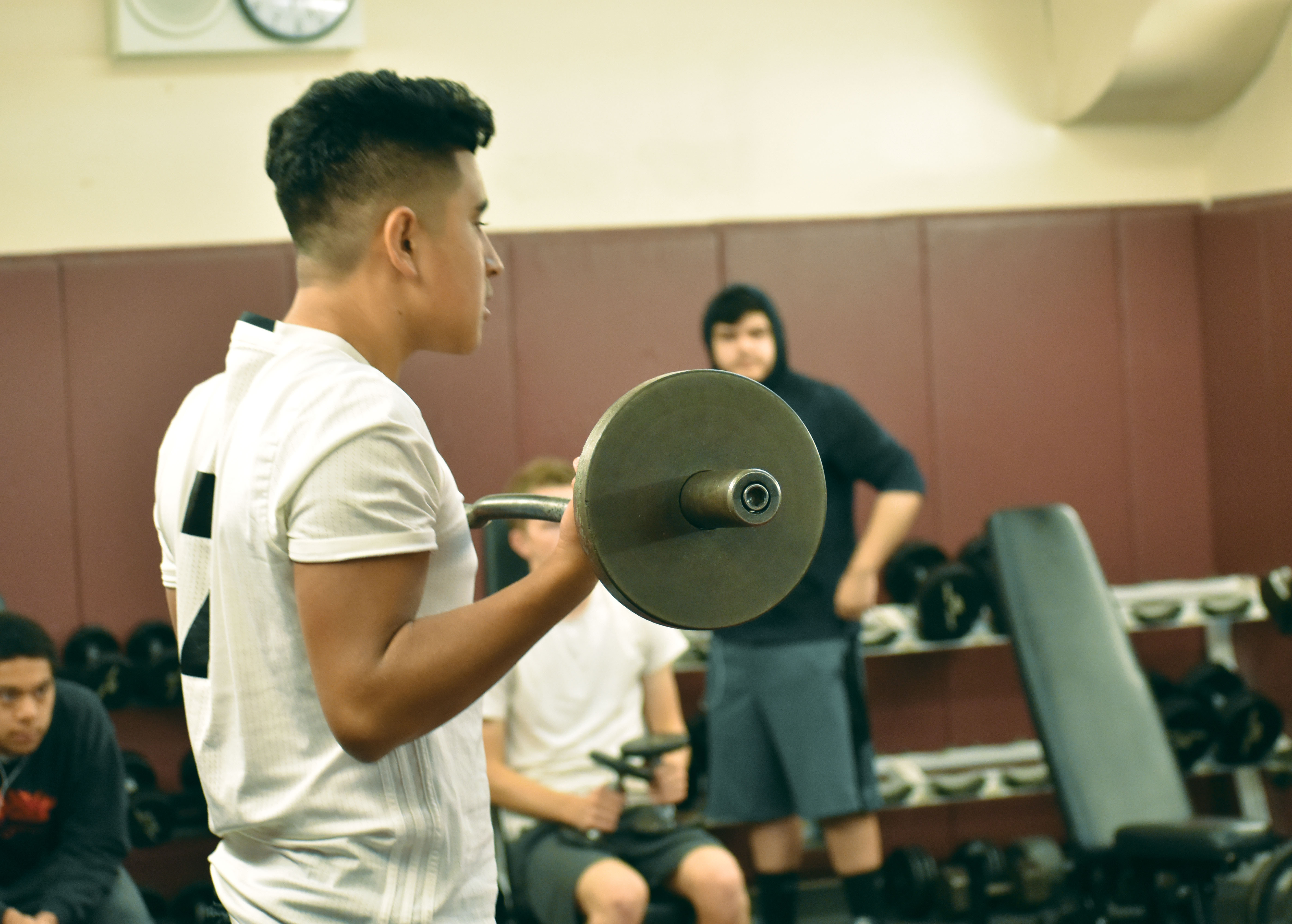
Junior Hidzar Orellana weightlifts during 2nd period Weight Training.
Junior Justin Wong is a tri-sport athlete, running cross country in the fall, track in the spring and playing basketball in the winter. But throughout the entire year, Wong spends up to nine hours a week in the weight room.
“I lift for various school sports, as well as recreationally for my own purposes,” Wong said. “Since I have a lot of time right now, [I lift] about 1.5 hours each workout, six times a week.”

All athletes alike share a need for some form of strength training. Whether it be in the weight room, on the field, or even in the pool, strength and conditioning play a large role in any sport.
But it is a common belief that lifting heavy weights as an adolescent inhibits growth.
“People might see people who lift weights that are short and stocky,” said athletic director and head football coach Steve Sell. “If you see someone who lifts weights who’s not that tall but they’re stocky, they might be like, ‘Oh! One plus one equals three, so that must be because they lift weights.’”
The argument that weight lifting stunts growth is based on the idea that heavy weights damage growth plates. Growth plates, or epiphyseal plates, are areas of cartilage at the end of long bones that are responsible for bone growth. Although growth plate injuries are very common in general, they are rarely extreme enough to affect growth. Most injuries are completely resolved through treatment.
According to the Mayo Clinic, “With proper treatment, most growth plate fractures heal without complications.”
Additionally, growth plate fractures that aren’t severe can be treated using a cast or a brace to allow the plate to properly heal. If the fractured bones aren’t aligned, then surgery may be done through a process called manipulation which doesn’t require cutting into the skin.
There is a minor impact on height associated with weightlifting.
“Weightlifting does make people shorter, but only temporarily through the compression of the spinal cord,” Wong said. “This happens naturally throughout the day when your body is upright anyways. Laying down at night will bring your height back to normal.”
“Weightlifting does make people shorter, but only temporarily through the compression of the spinal cord”
Some also believe that intense physical activity through sports may stunt a child’s growth.
Female gymnasts are notorious for their small stature. Simone Biles, an Olympic gymnast, stands at 4 foot 8 inches, which is eight inches shorter than the national average woman. According to an analysis by The Guardian on the 2012 Olympic Games, the average height for female gymnasts is a little over five feet.
Some conclude that gymnastics in turn stunts growth. However, gymnastics is geared more towards individuals that are shorter.
“Being light helps the gymnast to achieve a high strength-to-weight ratio, and being small helps with rotational skills [for example, somersaults],” said physiologist Kevin Thomson, in a British Broadcasting Corporation article.
The same trend of smaller stature goes for powerlifters.
“If you’re a powerlifter, someone who just does bench, squat and deadlift, if you look at those guys, typically they are a bit shorter,” said strength and conditioning coach Michael Wu. “If you look at a lot of the best lifters, yes they’re short, but is that because they’ve lifted or are they good lifters because they’re short?”
But for many athletes, height is a fair potential sacrifice for improved strength.
“I think bottom line is whether it does or doesn’t [stunt growth], the benefits of a good weight lifting program … that’s properly balanced, a program that’s a properly periodized, a program that has the proper variability and exercise selection … far outweigh the risk of it stunting your growth,” Wu said.
Sophomore defensive back Glenn Voyles said he believes athletes use the argument that weightlifting stunts growth to justify their lack of weight training.
“I think that weak people came up with that as an excuse to keep being lazy,” Voyles said.
Despite the popularity of the myth that weightlifting stunts growth, much research has proven the opposite.
According to the University of California, Berkeley, resistance training strengthens bone density.
“The only concern is a serious injury from weightlifting,” Wong said. “With proper form and experience, [free weights] should not be overlooked because of the benefits that come from using them.”



